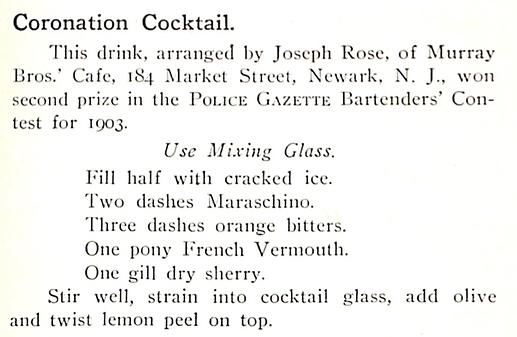The overwhelming majority of historical mixed drink recipes (and not a few contemporary ones) that call for sherry, literally call for “sherry”. A tiny minority toss in an adjective such as “dry sherry”. Once in a great while, you’ll get “brown sherry” (actually something specific, maybe) or “pale sherry” or “sweet sherry”.
I have included a slew of examples below, spanning 100 years. I could’ve included vastly more, but I think this might suffice.
This terminology doesn’t obviously map to our contemporary sherry styles:
- fino/manzanilla, amontillado, palo cortado, and oloroso (all utterly devoid of sweetness but lining up across a rough oxidative flavor spectrum)
- PX and moscatel (naturally sweet styles)
- a bunch of blended (sweetened) sherry products such as cream sherries, mediums, “cocktail sherry” (a post-Prohibition marketing invention, if I understand correctly), etc.
@Splificator notes (in Imbibe) that “pale” and “brown” were common historical parlance, which sure sounds to me like improvised terminology filling a void. (I suspect that an awful lot of sherry drinks were tossed off with whatever happened to be on hand with the letters “Jerez” on the label.)
While I am no “sherry expert”, I have tasted enough sherry and am confident I can apply my own preferences and informed discretion to make these drinks in a way that is satisfying to me, but that is beside the real question, which is what we can and should tell (write for) people who lack that experience? What is safe to say, and what is overreach?
Jerry Thomas, New York, 1862
Leo Engel, London, 1875
Harry Johnson, New York, 1900
Charles Mahoney, New York, 1905
Bill Boothby, San Francisco, 1908
Harry Craddock, London, 1930

Albert Stevens Crockett, Old Waldorf Bar Days, 1931
Approved Cocktails (UKBG), 1937 (two recipes)

Vic Bergeron, Oakland, 1946 (three recipes)



Ted Saucier, New York, 1951
Charles Baker, New York, 1951








